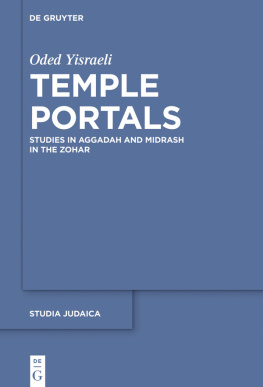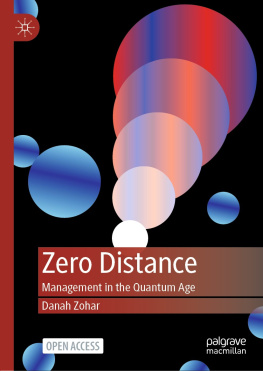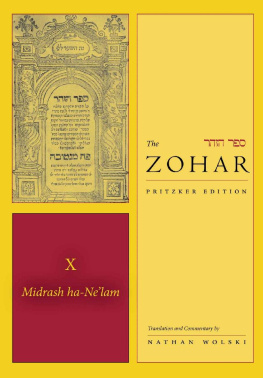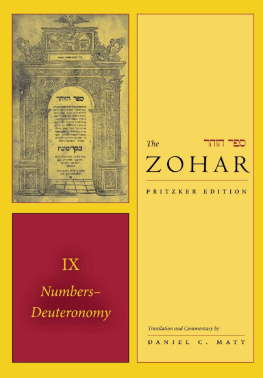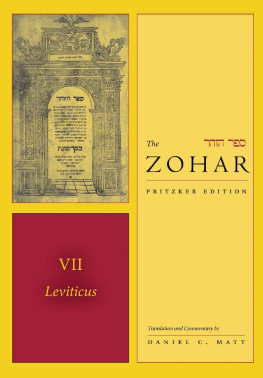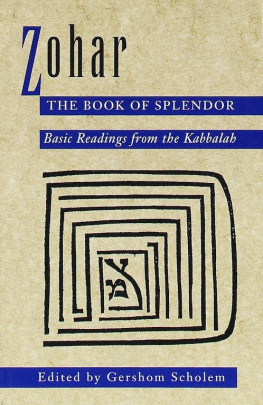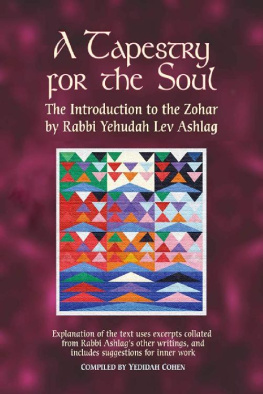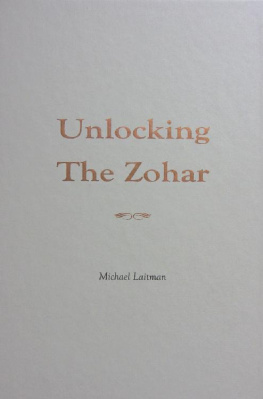Praise for
THE ESSENTIAL ZOHAR

In elegant prose, Rav Berg takes a complex subject and renders it accessible in this presentation of a venerable Jewish study. Word by word, passage by passage, he unravels apparent and transcendent meanings in these parables of the human condition, exemplified in biblical lore. Berg beautifully references the significance of these teachings today, acknowledging the inherent difficulty of spiritual development while also highlighting its rewards.
NAPRA ReView
Insightful Berg writes accessibly about the Zohar as a way people can tap into cosmic energies that are available for personal and universal salvation.
Publishers Weekly
Also by RAV P. S. BERG
Wheels of a Soul
Time Zones
To the Power of One
Miracles, Mysteries & Prayer (two volumes)
Secret Codes of the Universe
Immortality
Education of a Kabbalist
Kabbalistic Astrology
Copyright 2002 by Kabbalist Rav Berg
All rights reserved. No part of this book may be reproduced or transmitted in any form or by any means, electronic or mechanical, including photocopying, recording, or by any information storage and retrieval system, without permission in writing from the publisher.
Published in the United States by Three Rivers Press, an imprint of the Crown Publishing Group, a division of Random House, Inc., New York. www.crownpublishing.com
Three Rivers Press and the Tugboat design are registered trademarks of Random House, Inc.
Originally published in hardcover by Bell Tower, an imprint of the Crown Publishing Group, a division of Random House, Inc., New York, in 2002. Subsequently published in paperback by Bell Tower in 2004.
Design by Fearn Cutler de Vicq
Library of Congress Cataloging-in-Publication Data
Berg, Philip S.
The essential Zohar : the source of kabbalistic wisdom / by P. S. Berg.
1. Zohar. 2. Cabala. 3. Bible. O.T. PentateuchCommentaries. I. Title.
BM525.A59 B47 2002
296.162dc21 2001039565
eISBN: 978-0-676-90513-7
v3.1
For my wife, Karen.
In the vastness of cosmic space and the infinity of lifetimes, it is my
bliss to be your soul mate and to share a lifetime with you.
CONTENTS
Part One

FOUNDATIONS
THE ZOHAR AND KABBALAH
T he Zohar is the central text of Kabbalah, and Kabbalah is the spiritual heritage of all humankind. Though it is often defined as the mystical tradition of Judaism, Kabbalah predates and transcends identification with any religion, nation, or ethnicity. Kabbalah is a body of spiritual wisdom and teachings, but it is not religious, as that word is often understood. Kabbalah is not about rote obedience of laws or commandments. It is not based on literal interpretation of scriptures, nor does it include fear of punishment as a motivation for observance. Moreover, unlike traditions that celebrate ecstatic or transcendent approaches to divine wisdom, Kabbalah includes logical analysis of spiritual matters as an important tool. As in quantum physics or genetics, however, logic in Kabbalah can take challenging and paradoxical forms. To fully grasp the kabbalistic principles as they are presented in the Zohar, it is best to discard both conventional religious expectations and linear, mechanistic styles of rational thought. Science tells us that an electron can exist in two places at once, even at opposite ends of the universe. Kabbalah does not ask us to accept anything more radical than thator anything less radical, either!
It is most useful to think of Kabbalah in terms of tools, practical applications, guidebooks, and sometimes delphic utterances, rather than as religion or academic philosophy. By doing so, we can begin to put these tools to work in our own lives. We can also eliminate preconceptions that are utterly foreign to the true teachings of the sages. Kabbalah and the Zohar belong to everyone who has a sincere desire to learn, grow, and transform.
When the Creator brought the world into being, it was not His intention to include the pain and suffering that today beset us. Kabbalah, in common with other spiritual traditions, teaches that the negativity that afflicts humankind came about through the temptation and fall of primordial man. The kabbalists have used the word chaos to describe the negative circumstances that surround usthe Murphys Law environment in which things will go wrong if they possibly can. Chaos is indeed an apt word. It is the opposite of harmony with the Creator, or more precisely, the unity with Him that once existed and will one day be regained.
Achieving this unity, according to Kabbalah, is the true purpose of lives: to restore Creation to the state that God intended for it, and to reenter the Eden from which we were exiled by Adams sin. To make possible this return to paradise, the Creator has provided us with powerful spiritual tools, including the Sabbath, the Hebrew language and alphabet, and many others. Most of these tools are identified with Judaism in the public mind. But they, like the redemption they are intended to foster, are the birthright of everyone. Making this clear is an important purpose of this book, and of Kabbalah as a whole.
The Zohar is a very long booka complete translation comprises many volumesbut even at full length the sages of Kabbalah view it as a concentrated distillation of infinite wisdom. To the kabbalists, the Zohar is more like a finely polished gem than an object made of paper and ink. Like a diamond or ruby, the Zohar is hard and durable. It is ageless. It shines as brightly today as it did at the time of its creation. Again, like a jewel, it is easily hidden, and there have been centuries in which its very existence was known to only a few. Moreover, the Zohar has many facets and colors, depending on the angle and the spiritual light in which it is viewed. Perhaps it is no surprise that one of historys greatest kabbalists, Rabbi Moses Chaim Luzzatto (17071746) was a diamond merchant in Amsterdam.
Among secular scholars and historians there is controversy surrounding the authorship and chronology of the traditions most important texts, but the kabbalists themselves are very clear on these points. The first book of Kabbalah, the Sefer Yetzirah (The Book of Formation) was revealed by the Creator to Abraham the Patriarch. Since this occurred four hundred years before the revelation of the Ten Utterances (or Commandments), the Sefer Yetzirah preceded the written Bible by many centuries. In fewer words than a slender paperback, the Sefer Yetzirah describes how Creation was accomplished through the distinct energies of the twenty-two letters of the Hebrew alphabet and the letters numerological significance. The teachings of the Sefer Yetzirah, however, are so compressed as to be impenetrable to all but very elevated souls. If the Zohar is like a shining, multifaceted jewel, the Sefer Yetzirah is a small but perfectly cut diamond whose proportions can be appreciated only by a highly trained eye.
The Authorship and Structure of the Zohar
It was in the second century C.E., during the Roman occupation of what is now Israel, that the Zohar was revealed by the Creator to Rabbi Shimon bar Yochai and his son Elazar, who had taken refuge from the Romans in a mountain cave. This is a very firm kabbalistic teaching, although the origin of the Zohar is a subject of debate among academics. Many scholars maintain that the Zohar was written by the eleventh-century kabbalist Moses de Leon or by others among his contemporaries. When the Zohar is truly understood, however, it becomes clear that only Rabbi Shimon could have composed the work.
Next page

